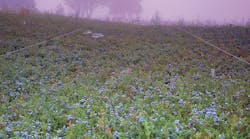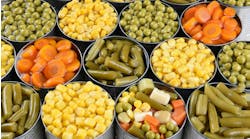In recent years, consumer concern about the environmental impact of food production has risen markedly. That concern encompasses everything from the amount of pesticides, genetically-modified products, and greenhouse-gas emissions involved in the growing process, to the amount of fuel and water required to bring the food from farm to table.
In fact, a federal law mandating labeling of all products containing GMOs goes into effect this year. That’s an area where Wild Blueberries naturally offer a competitive advantage.
Research has shown that WiId Blueberries add significant value to a brand’s perceived commitment to sustainability. Nearly two-thirds (63%) of consumers reported that they believed that products made with Wild Blueberries were more sustainable than those same products made with ordinary blueberries, according to the Power of Wild, a groundbreaking national study of consumer attitudes. That belief is even stronger among the $290 billion market of Lifestyles of Health and Sustainability (LOHAS) consumers, which represents 1 in 4 adults. In the LOHAS group, 77% of consumers believe foods with Wild Blueberries are more sustainable than those same foods with regular blueberries
Luckily, the research backs that up.
“Wild Blueberries are really a very low-input crop relative to most others,” said Dr. David Yarborough, Wild Blueberry specialist and professor of horticulture at the University of Maine.
Here are four reasons why Wild Blueberries are a more earth-friendly choice:
Wild Blueberries are indigenous. Wild Blueberries flourished on earth long before modern farming practices began. They are commercially harvested only in Maine and Eastern Canada—where they began growing when the glaciers receded,14,000 years ago. That means they’re not planted like commercial crops. “Because they’re here naturally, we don’t have the disturbance of the soil involved in planting as in cultivated blueberries,” said Yarborough. “We are not taking land out of nature but managing the natural resource that already exists.”
Wild Blueberries require less water. Because Wild Blueberries have evolved over centuries in areas where there’s less than one inch of rain per week, they don’t need as much water as other crops. Irrigation is only necessary as a supplement during dry spells in August when timing and distribution are an issue. What’s more, these “low-bush” berries grow close to the ground, and nearly 66% of the plant lives underground. Wild Blueberries are spread primarily by underground runners (rhizomes), which produce new roots and stems, store nutrients, and allow it to withstand droughts more than plants that just have roots, Yarborough explained. Any water that is not taken up by the plants just percolates into the aquifer below the fields to be used the next time it is needed, he added.
So, if sustainability is important to your brand and to the foods you create, consider incorporating these little wild ones into your next formulations and help add credibility to your sustainability story with nature’s 14,000 year old sustainable superfruit. It was here long before us, and it will be here long after we’re gone and represents the epitome of a sustainable food source.
Editor's Note: This post was sponsored by the Wild Blueberry Association of North America. To learn more about the the sustainability benefits of Wild Blueberries, visit https://www.wildblueberries.com/the-better-blueberry/the-story-of-wild/growing-wild-blueberries/


